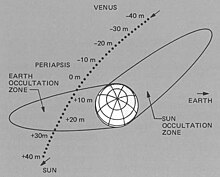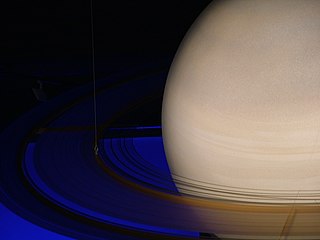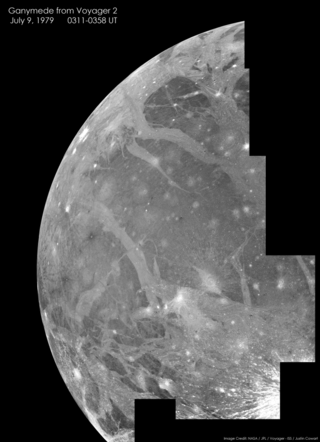| Flyby date | Launch date | Operator | Spacecraft | Details | Mission result |
|---|
| 19 May 1961 | 12 February 1961 |  | Venera 1 | First Venus flyby (contact lost before flyby) [4] | Failure |
| 14 December 1962 | 27 August 1962 |  | Mariner 2 | First successful non-lunar planetary encounter and first successful Venus flyby [5] | Success |
| 19 June 1963 | 1 November 1962 |  | Mars 1 | First Mars flyby (contact lost) [6] | Failure |
| 19 July 1964 | 2 April 1964 |  | Zond 1 | Venus flyby (contact lost) [7] | Failure |
| 15 July 1965 | 28 November 1964 |  | Mariner 4 | First successful Mars flyby [8] | Success |
| 6 August 1965 | 30 November 1964 |  | Zond 2 | Mars flyby (contact lost) [9] | Failure |
| 27 February 1966 | 12 November 1965 |  | Venera 2 | Venus flyby (contact lost) [10] | Failure |
| 19 October 1967 | 14 June 1967 |  | Mariner 5 | Venus flyby [11] | Success |
| 31 July 1969 | 25 February 1969 |  | Mariner 6 | Mars flyby [12] | Success |
| 5 August 1969 | 27 March 1969 |  | Mariner 7 | Mars flyby [13] | Success |
| 3 December 1973 | 3 March 1972 |  | Pioneer 10 | First Jupiter flyby [14] | Success |
| 5 February 1974 | 4 November 1973 |  | Mariner 10 | Venus flyby [15] | Success |
| 10 February 1974 | 21 July 1973 |  | Mars 4 | Mars flyby (inadvertent; attempted Mars orbiter) [16] | Failure |
| 9 March 1974 | 9 August 1973 |  | Mars 7 | Mars flyby (inadvertent; attempted Mars lander) [17] | Failure |
| 12 March 1974 | 5 August 1973 |  | Mars 6 | Mars flyby (flyby succeeded but lander failed) [18] | Failure |
| 29 March 1974 | 4 November 1973 |  | Mariner 10 | First Mercury flyby [15] | Success |
| 21 September 1974 | 4 November 1973 |  | Mariner 10 | Mercury flyby [15] | Success |
| 3 December 1974 | 5 April 1973 |  | Pioneer 11 | Jupiter flyby [19] | Success |
| 16 March 1975 | 4 November 1973 |  | Mariner 10 | Mercury flyby [15] | Success |
| 19 December 1978 | 14 September 1978 |  | Venera 12 | Venus flyby and lander [20] | Success |
| 25 December 1978 | 9 September 1978 |  | Venera 11 | Venus flyby and lander [21] | Success |
| 5 March 1979 | 5 September 1977 |  | Voyager 1 | Jupiter flyby [22] | Success |
| 9 July 1979 | 20 August 1977 |  | Voyager 2 | Jupiter flyby [23] | Success |
| 1 September 1979 | 5 April 1973 |  | Pioneer 11 | First Saturn flyby [19] | Success |
| 12 November 1980 | 5 September 1977 |  | Voyager 1 | Saturn flyby [22] | Success |
| 25 August 1981 | 20 August 1977 |  | Voyager 2 | Saturn flyby [23] | Success |
| 1 March 1982 | 30 October 1981 |  | Venera 13 | Venus flyby and lander [24] | Success |
| 5 March 1982 | 4 November 1981 |  | Venera 14 | Venus flyby and lander [25] | Success |
| 11 June 1985 | 15 December 1984 |  | Vega 1 | Venus flyby, lander, and first balloon [26] | Success |
| 15 June 1985 | 21 December 1984 |  | Vega 2 | Venus flyby, lander, and balloon [27] | Success |
| 24 January 1986 | 20 August 1977 |  | Voyager 2 | First and only Uranus flyby [23] | Success |
| 25 August 1989 | 20 August 1977 |  | Voyager 2 | First and only Neptune flyby [23] | Success |
| 10 February 1990 | 13 October 1989 |  | Galileo | Venus flyby, first of three gravity assists to Jupiter [28] | Success |
| 2 July 1990 | 2 July 1985 |  | Giotto | First Earth flyby, gravity assist for extended mission to 26P/Grigg–Skjellerup [29] | Success |
| 8 October 1990 | 13 October 1989 |  | Galileo | Earth flyby, second of three gravity assists to Jupiter [28] | Success |
| 8 January 1992 | 7 January 1985 |  | Sakigake | Earth flyby [30] | Success |
| 8 February 1992 | 6 October 1990 |   | Ulysses | Jupiter flyby, inclination change gravity assist for solar mission [31] | Success |
| 8 December 1992 | 13 October 1989 |  | Galileo | Earth flyby, last of three gravity assists to Jupiter [28] | Success |
| 24 August 1993 | 25 September 1992 |  | Mars Observer | Mars flyby (inadvertent; attempted Mars orbiter) [32] | Failure |
| 23 January 1998 | 17 February 1996 |  | NEAR Shoemaker | Earth flyby, gravity assist to 433 Eros [33] | Success |
| 26 April 1998 | 15 October 1997 |   | Cassini–Huygens | Venus flyby, first of four gravity assists to Saturn [34] | Success |
| 24 June 1999 | 15 October 1997 |   | Cassini–Huygens | Venus flyby, second of four gravity assists to Saturn [35] | Success |
| 18 August 1999 | 15 October 1997 |   | Cassini–Huygens | Earth flyby, third of four gravity assists to Saturn [36] | Success |
| 30 December 2000 | 15 October 1997 |   | Cassini–Huygens | Jupiter flyby, last of four gravity assists to Saturn [37] | Success |
| 15 January 2001 | 27 February 1999 |  | Stardust | Earth flyby, gravity assist to 81P/Wild [38] | Success |
| 21 April 2002 | 4 July 1998 |  | Nozomi | Earth flyby, first of two gravity assists to Mars [39] | Success |
| 19 June 2003 | 4 July 1998 |  | Nozomi | Earth flyby, last of two gravity assists to Mars [39] | Success |
| 14 December 2003 | 4 July 1998 |  | Nozomi | Mars flyby (inadvertent; planned Mars orbiter) [39] | Failure |
| 19 May 2004 | 9 May 2003 |  | Hayabusa | Earth flyby, gravity assist to 25143 Itokawa [40] | Success |
| 4 March 2005 | 2 March 2004 |  | Rosetta | Earth flyby, first of four gravity assists to 67P/Churyumov–Gerasimenko [41] | Success |
| 2 August 2005 | 3 August 2004 |  | MESSENGER | Earth flyby, first gravity assist to Mercury [42] | Success |
| 15 January 2006 | 27 February 1999 |  | Stardust | Earth flyby and sample return capsule reentry [38] | Success |
| 24 October 2006 | 3 August 2004 |  | MESSENGER | Venus flyby, second gravity assist to Mercury [42] | Success |
| 25 February 2007 | 2 March 2004 |  | Rosetta | Mars flyby, second of four gravity assists to 67P/Churyumov–Gerasimenko [41] | Success |
| 28 February 2007 | 19 January 2006 |  | New Horizons | Jupiter flyby, gravity assist to Pluto/Charon system | Success |
| 5 June 2007 | 3 August 2004 |  | MESSENGER | Venus flyby, third gravity assist to Mercury. Also characterized the planet's atmosphere. [42] | Success |
| 13 November 2007 | 2 March 2004 |  | Rosetta | Earth flyby, third of four gravity assists to 67P/Churyumov–Gerasimenko [41] | Success |
| 31 December 2007 | 12 January 2005 |  | Deep Impact (EPOXI) | Earth flyby [43] | Success |
| 14 January 2008 | 3 August 2004 |  | MESSENGER | Mercury flyby, fourth gravity assist before orbital insertion and primary mission [42] | Success |
| 6 October 2008 | 3 August 2004 |  | MESSENGER | Mercury flyby, fifth gravity assist before orbital insertion and primary mission [42] | Success |
| 29 December 2008 | 12 January 2005 |  | Deep Impact (EPOXI) | Earth flyby [43] | Success |
| 14 January 2009 | 27 February 1999 |  | Stardust | Earth flyby, gravity assist to 9P/Tempel [38] | Success |
| 18 February 2009 | 27 September 2007 |  | Dawn | Mars flyby, gravity assist to 4 Vesta [44] | Success |
| 29 June 2009 | 12 January 2005 |  | Deep Impact (EPOXI) | Earth flyby (distant) [45] | Success |
| 29 September 2009 | 3 August 2004 |  | MESSENGER | Mercury flyby, sixth and final gravity assist before orbital insertion and primary mission [42] | Success |
| 13 November 2009 | 2 March 2004 |  | Rosetta | Earth flyby, last of four gravity assists to 67P/Churyumov–Gerasimenko [41] | Success |
| 28 December 2009 | 12 January 2005 |  | Deep Impact (EPOXI) | Earth flyby (distant) [45] | Success |
| 27 June 2010 | 12 January 2005 |  | Deep Impact (EPOXI) | Earth flyby [43] | Success |
| 6 December 2010 | 20 May 2010 |  | Akatsuki | Venus flyby (inadvertent; was intended to be orbit insertion; later successfully inserted into orbit in 2015) [46] | Failure |
| 8 December 2010 | 20 May 2010 |  | IKAROS | Venus flyby, probe was a technological demonstrator that launched with Akatsuki [47] | Success |
| 9 October 2013 | 5 August 2011 |  | Juno | Earth flyby, gravity assist to Jupiter [48] | Success |
| 14 July 2015 | 19 January 2006 |  | New Horizons | First and only Pluto/Charon flyby [Note 1] [49] | Success |
| 3 December 2015 | 3 December 2014 |  | Hayabusa2 | Earth flyby, gravity assist to 162173 Ryugu [50] | Success |
| 22 September 2017 | 8 September 2016 |  | OSIRIS-REx | Earth flyby, gravity assist to 101955 Bennu | Success |
| 3 October 2018 | 12 August 2018 |  | Parker Solar Probe | Venus flyby | Success |
| 26 November 2018 | 5 May 2018 |  | Mars Cube One | Mars flyby | Success |
| 10 April 2020 | 20 October 2018 |  | BepiColombo | Earth flyby | Success |
| 23 July 2020 | ~10 February 2021 |  | Tianwen 1 deployable camera | Mars flyby | Success |
| 15 October 2020 | 20 October 2018 |  | BepiColombo | Venus flyby | Success |
| 5 December 2020 | 3 December 2014 |  | Hayabusa2 | Earth flyby, gravity assist to (98943) 2001 CC21 | Success |
| 27 December 2020 | 10 February 2020 |  | Solar Orbiter | Venus flyby | Success |
| 9 August 2021 | 10 February 2020 |  | Solar Orbiter | Venus flyby | Success |
| 10 August 2021 | 20 October 2018 |  | BepiColombo | Venus flyby | Success |
| 1 October 2021 | 20 October 2018 |  | BepiColombo | Mercury flyby | Success |
| 27 November 2021 | 10 February 2020 |  | Solar Orbiter | Earth flyby | Success |
| 23 June 2022 | 20 October 2018 |  | BepiColombo | Mercury flyby | Success |
| 4 September 2022 | 10 February 2020 |  | Solar Orbiter | Venus flyby | Success |
| 19 June 2023 | 20 October 2018 |  | BepiColombo | Mercury flyby | Success |
| 24 September 2023 | 8 September 2016 |  | OSIRIS-REx | Earth flyby, gravity assist to 99942 Apophis | Success |
| 26 September 2022 | 24 November 2021 |  | LICIACube | 65803 Didymos flyby | Success |
| May 2026 | 13 October 2023 |  | Psyche | Mars flyby | Planned |













